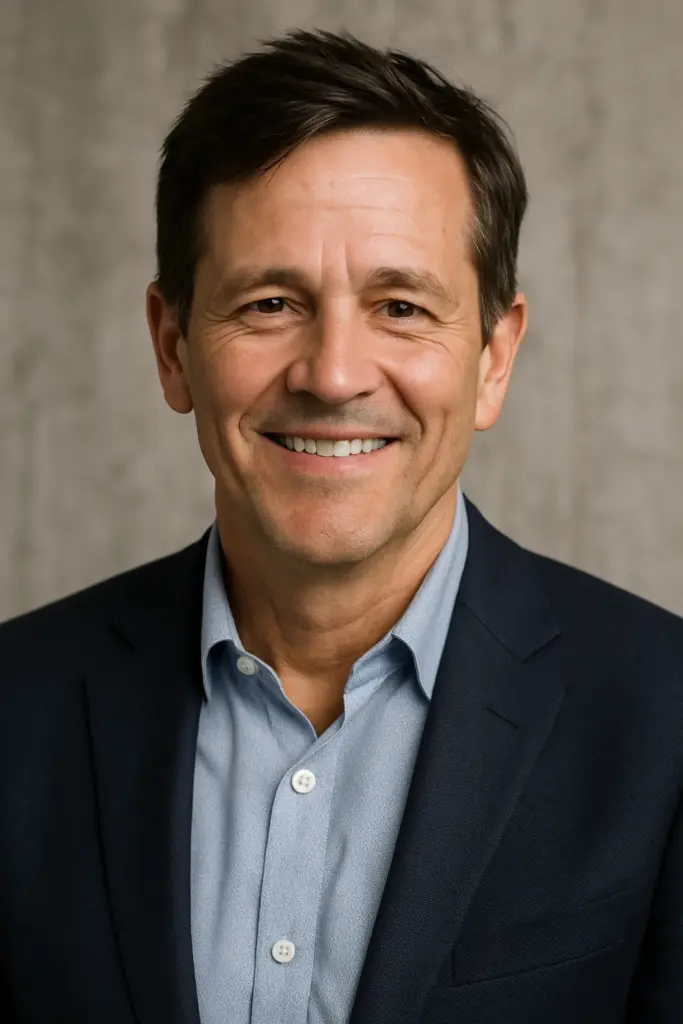Tim Sanders’ advice on escaping the rut and how confidence can fast-track your career

I read this June Inc. Magazine article last weekend and wanted to share it with all of you. I love sharing so this article obviously resonated with me and I hope it does with you as well. The article is quite long so I tried to reduce it to just the “meaty parts” but as you can see it was difficult. The link to the full article is below if you want to read through it in its entirety.
Is your life going sideways? Former Yahoo executive Tim Sanders shares his personal advice on escaping the rut and how confidence can fast-track your career.
By Dave Smith | Jun 15, 2011
How to Fast Forward Your Goals
- Sanders’ latest book, Today We Are Rich, describes how to break out of the doldrums and power your career forward. Feeling stuck in neutral is a common sentiment among entrepreneurs, but Sanders believes to have found the perfect recipe for lasting achievement and happiness. To Sanders, the key to everlasting business success all boils down to one word: confidence.
- There are two kinds: there’s circumstantial confidence—or, as Mark Cuban used to always say, “Everyone’s a genius during a bull market”—and there’s cultivated confidence, a lifestyle design principle that has to do with the information you put in your head, the conversation that comes out of your mouth, and your thoughts and deeds.
Why do people have sideways years?
Success isn’t really a destination, because you’ll never get there. Talk to anyone with millions or billions, they’re always thinking of the next thing. Success is a direction, and that direction is forward. And in our careers, we have those forward leap years. These are years where we either grow internally, in terms of our capability, or externally, in terms of our influence and ability to extract value. So when you’re moving forward, you’re usually capturing a lot of financial value, you’re gaining a lot of assets along the way—many of them intangible, such as intellectual or your network of relationships—and you have a feeling inside yourself that you have big momentum. And it feeds on itself: The more you realize it, the more you feel it, the more it improves your performance, the more you get it, the more you leverage, and that’s how people really make leaps in life.
Then there are those times that something has just gone haywire in your head, and you have self-destructive thoughts, and you go backwards in your career. And that’s rare, really; most people that think they’re going backwards are kind of in between, and those are what we call those “sideways years.”
Sideways years is where you have voices in your head sometimes, and they’re triggered by voices in the real world, or what I call the “scare merchants”—on cable TV, the authors of “USA Yesterday”—these people that give you reason to be fearful as a way of drawing attention from you. What it does is it triggers the scarcity mindset inside of you. You believe there’s not enough to go around, so you go from that I’m-trying-to-move-forward feeling into survival mode. Or, you just lose your fire and you don’t have the ambition to move forward, as Napoleon Hill would say.
You created a set of seven principles to give your life a new trajectory, to get out of those sideways years. Of those principles, which one had the greatest impact on your life?
[The principle] “Give to be rich” has had the most impact on me, because nothing sets you in a forward motion more than generosity. What generosity does is it focuses the mind on what you have, and not what you lack. Generosity forces that kind of thinking, because you’ll typically never give to someone who’s got more than you. So when you’re being a mentor to somebody who’s struggling at work or in a transition period and you see that you helped to move the needle, it helps you realize how insignificant your problems are.
The other thing generosity does at a more physical level is it triggers the reward center in your brain, which releases a variety of chemicals. When you help and you realize you’re helping, it creates a chemical reaction which would unload things like dopamine and endorphins and serotonins. The most important thing that happens is your body will release a hormone called oxytosin. Oxytosin is known as the bonding hormone: It changes your point of view about people a little bit, and it makes you much more sympathetic and emphatic.
For entrepreneurs, this is important. Your ability to bond with your customers, bond with your start-up employees, and trust them is the key to everything, because you can’t scale, if you can’t trust. You can’t scale a consumer business if you don’t trust consumers to give back more than you give them—ask Tony Hsieh at Zappos, incredible level of trust he has. You can’t create a great place to work like Herb Kelleher and Colleen Barrett did at Southwest [Airlines] if you don’t trust your people enough to say, “The customer is not always right.” Trust is difficult to create, but I have seen in the best entrepreneur circles that the most trusting are always the most giving. There’s just something about helping other people that causes you to realize that all people are good.
I want an entrepreneur to think that every time you have an opportunity to either educate, mentor, or network someone who’s got less than you but the same desire, you should consider yourself mastering your mind. Henry Ford once said that was really the secret to his success, is that he conquered his mind. One of the greatest ways you conquer your mind is by giving, because you release things that don’t own you anymore—[André] Gide, the French philosopher, always said, “That which you can’t release, it possesses you.” I always encourage people to stockpile stuff just so you can give it away, and that you should spend prospecting time every week trying to find good opportunities and be aggressive about it. It’s not a social responsibility; it’s a social opportunity.
On Timing and Entrepreneurship
If you looked at every recession since 1901, you always see entrepreneurs or organizations make great leaps during this down cycle before the recovery hits. In that tepid period, like we are right now and have been for the last two years, they always say that you’re three times more likely to make it during that period than a market top.
- In 1932, Kellogg’s makes the move and jumps over Post after being the Yahoo! of search engines, and they do it because they release Rice Krispies in 1932 against all recommendations. They understood that the technicals were strong for a promotion of a new cereal, there was still market demand, that one slice of CPG wasn’t dead in the water, and they knew Post was going to sit around and ask themselves, “Is the Depression over?”
- In 2001, the worst idea ever is to release the iPod when the dot-com crash was clearly on and Apple was taking a beating in the market. [Steve] Jobs noticed, though, that Sony, as a big slow company would be freaked out as much as he was, and they wouldn’t respond for a year or two. He really had to make that bet at that time because everybody had a Sony Walkman; if you told me that Apple would own the personal music device space in less than 24 months, I would’ve told you it had to be perfect timing. He had to do this when no one was watching, and that’s exactly what he did, and he did it again with the iPad.
Yes. Stan Woodward was my boss at AudioNet/Broadcast.com, and I remember the first day Stan came on the job taking over business services for [Mark] Cuban. He gets us up in the crow’s nest and he says, “Listen, there’s no such thing as the self-made man. It’s just not true, it’s arrogance. You can neither do this by yourself nor enjoy this by yourself. The other thing you have to remember is your dream is bigger than you, so don’t go down alone. Swallow your pride, and go get help.” I’ll never forget that, and that’s the true entrepreneurial spirit.
If there’s only one thing you hope readers take away from your book, what would it be?
There’s enough to go around. There’s enough to share. The only way you’re going to believe this is through confidence, but when you believe there’s enough to go around and you share in that moment, you’re worth something. This point of view, “enough to share,” is the secret to success in personal life and in business life.
